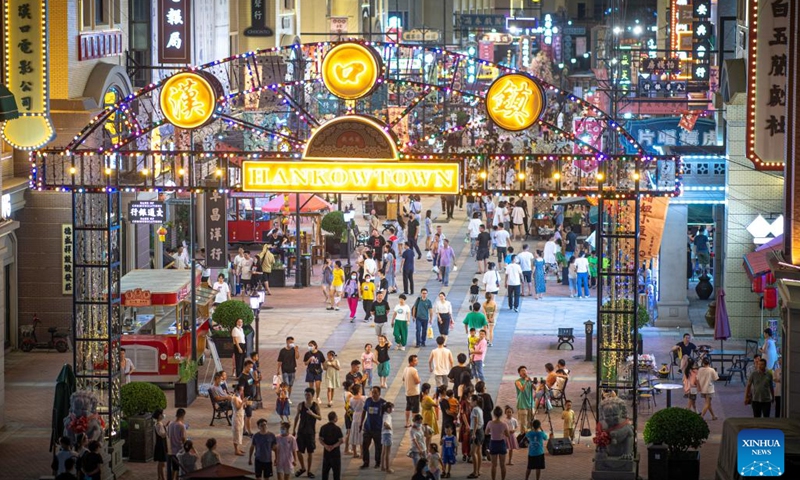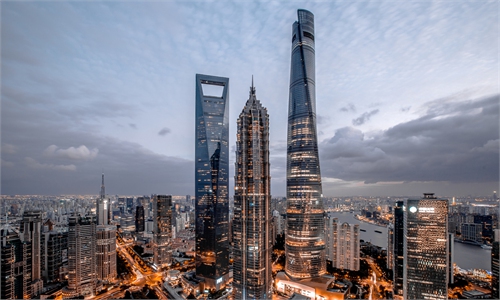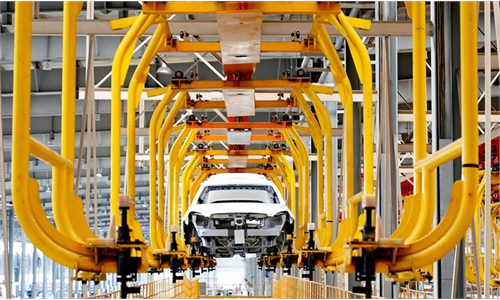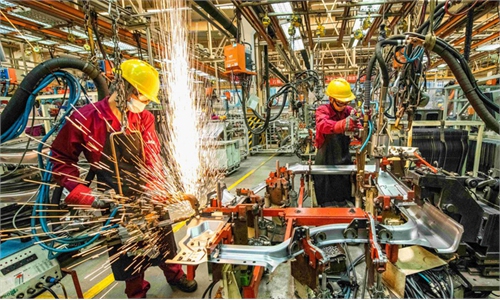Provinces sprint to grow economy with accelerated project construction, more consumption coupons
Hainan, Henan, Gansu double down on stabilization efforts

Photo taken on July 2, 2022 shows the view of a commercial street in Wuhan, central China's Hubei Province. In recent years, Hubei Province has striven to combine its night economy with culture and tourism in innovative ways, thus enhancing the vitality and attraction of nighttime consumption.(Photo: Xinhua)
South China's Hainan Province, Central China's Henan Province and Northwest China's Gansu Province said that they will ramp up efforts to stabilize the economy and sprint toward realizing their fourth-quarter goals. Their bids are expected to further consolidate the nation's economic recovery after key indicators improved in August.
Hainan, which has just emerged from a latest COVID-19 resurgence, said it aims to achieve full resumption of factory production and make a sprint for the fourth quarter. The island province's GDP, investment, consumption and other indicators dropped due to the negative impact of the epidemic flare-up in August.
Henan Province on Saturday said that it will carry out concentrated efforts to stabilize the economy, with a focus on promoting the early resumption of construction projects, and making full use of the dividends of national economic stability packages and policy measures.
Gansu Province on Friday vowed to promote the provincial economy in the fourth quarter and achieve its preset annual growth targets. It announced 24 specific policies to stabilize local economy that emphasize promoting major projects in new energy generation, petrochemicals, water conservation and transportation .
And, other provincial and regional governments in China are all launching policies intensively now as September and October are a key period for construction and household consumption. The government's stimulus policies are expected to propel the market, Hu Qimu, chief research fellow at the Sinosteel Economic Research Institute, told the Global Times on Sunday.
In a 35-point package of supportive measures, Hainan highlighted efforts to restore the island province's duty-free market. The island plans to issue 100 million yuan in coupons by the end of October to boost consumption on the island and another 50 million yuan for hotels and tourist attractions to lure more tourists.
In terms of foreign trade and investment, the province aims to introduce policies and measures to facilitate cross-border trade, set up a new offshore international trade service center, and fully implement and expand the list of industries that encourage foreign investment.
Henan vowed to accelerate the construction of various projects in the short term and ensure that effective investment plays a key role in stabilizing the market.
The province aims to expand its fixed-asset investment by more than 10 percent for the whole year to 2.8 trillion yuan, and it will strive for an economic growth rate of 5.5 percent in the second half, with total economic output of over 6.3 trillion yuan.
Henan is the fifth-largest provincial economy in China in 2021.
"Henan's economy is not small. If its growth rate can get closer to the target set at the start of this year, it will be of great help to achieving the annual economic growth of around 4 percent," Tian Yun, a veteran economist, told the Global Times on Sunday.
China's central government issued 19 follow-up measures in August, including an additional 300 billion yuan in development financing instrument. It announced a package of 33 other measures in May, covering the fiscal, financial, industrial and other fields to augment growth.
As these policies were being implemented, major indicators for August showed that the recovery momentum of the economy was sustained, data from the National Bureau of Statistics (NBS) showed on Friday.
Fixed-asset investment went up 5.8 percent year-on-year in the first eight months, up from 5.7 percent in the first seven months. Retail sales increased 5.4 percent, the fastest pace since February.
Overall, the economy withstood the negative impact of the shrinking external demand, epidemic flare-up, high temperatures and drought in August, Wu Chaoming, deputy head of the Chasing Research Institute, told the Global Times on Sunday.
With the accelerated use of special-purpose bonds and projects kicking off, the growth rate for infrastructure investment is expected to continue to pick up, Wu said.
However, real estate market is still weak and efforts are still need to prop up the market, he noted.
A U-shaped economic recovery is likely this year, with GDP growth of around 4.5 percent in the second half and 3.5 percent for the full year, Wu said.



